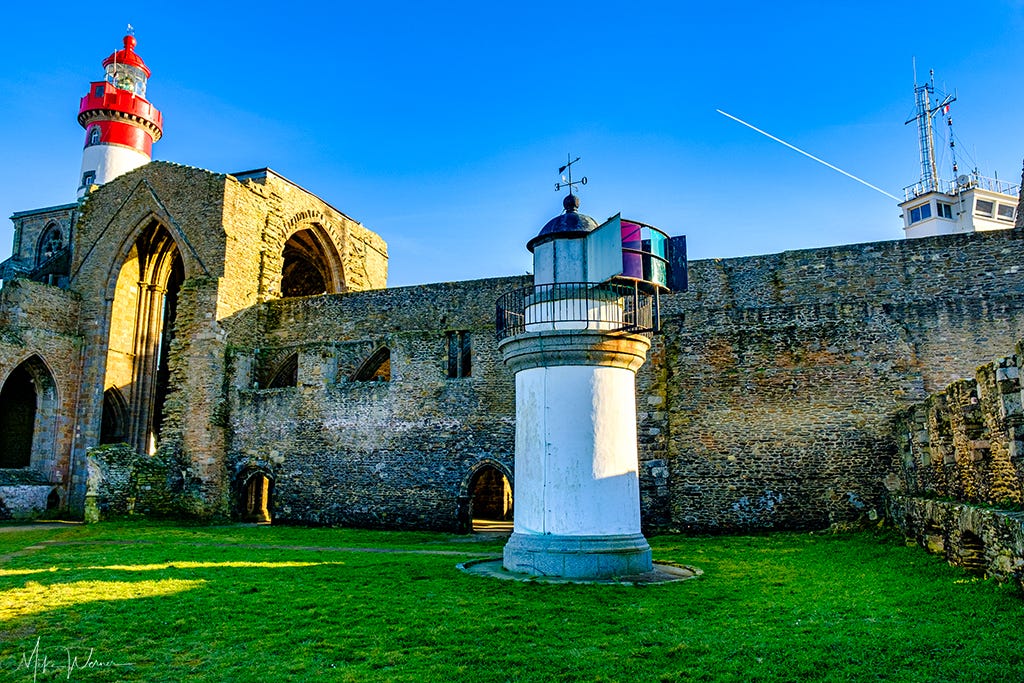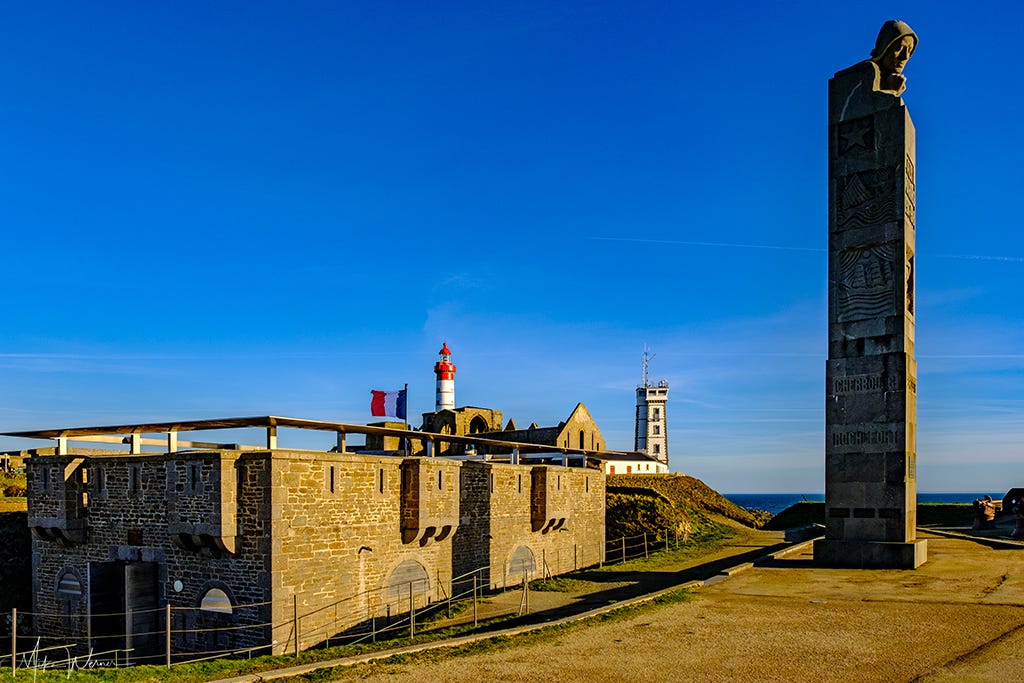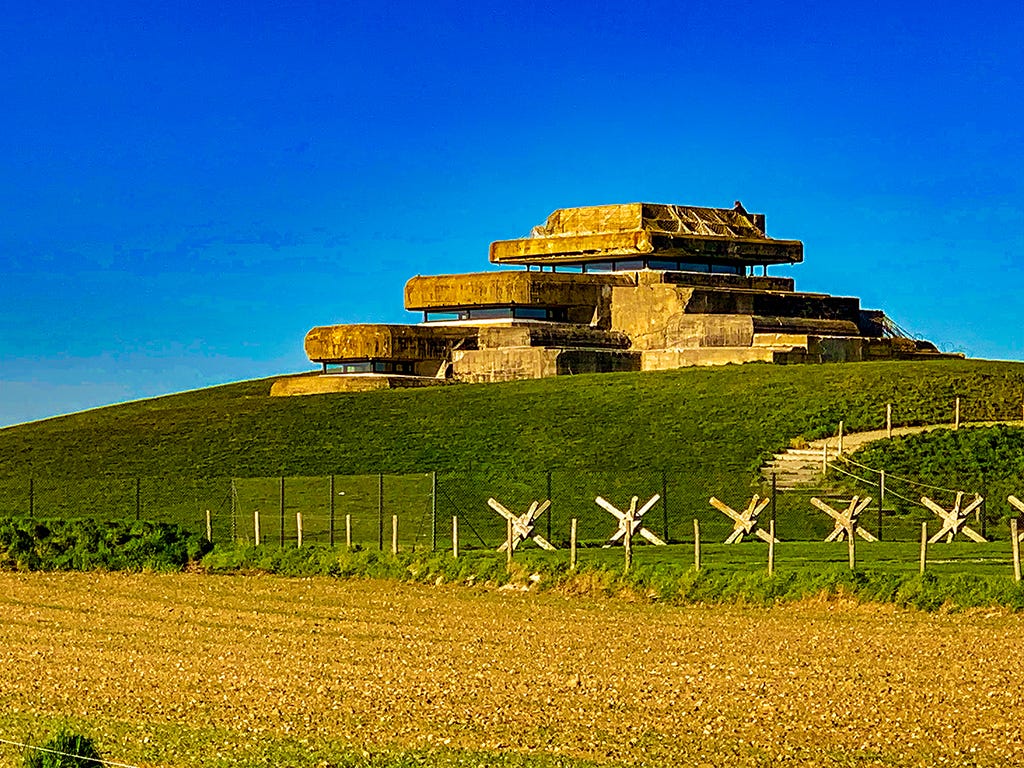Plougonvelin is a picturesque commune located in the Finistère department of Brittany, in northwestern France. This region is renowned for its rugged coastline, historic landmarks, and vibrant cultural heritage.
Click here to see where Plougonvelin is located on Google Maps
Saint-Mathieu Abbey ruins and the Saint Maur Monastery
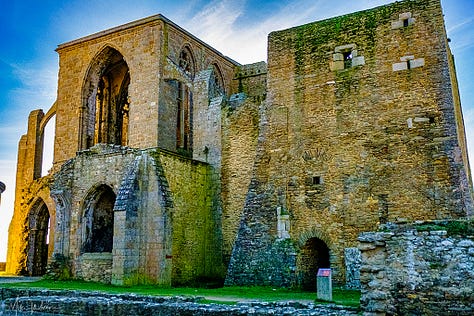
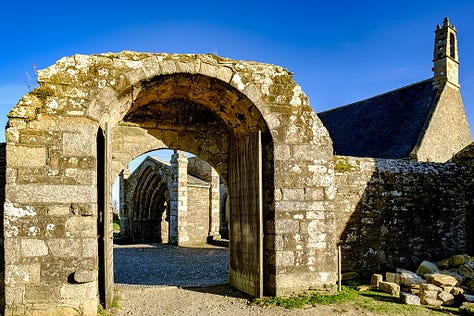
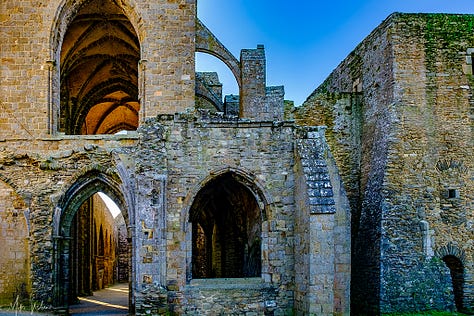
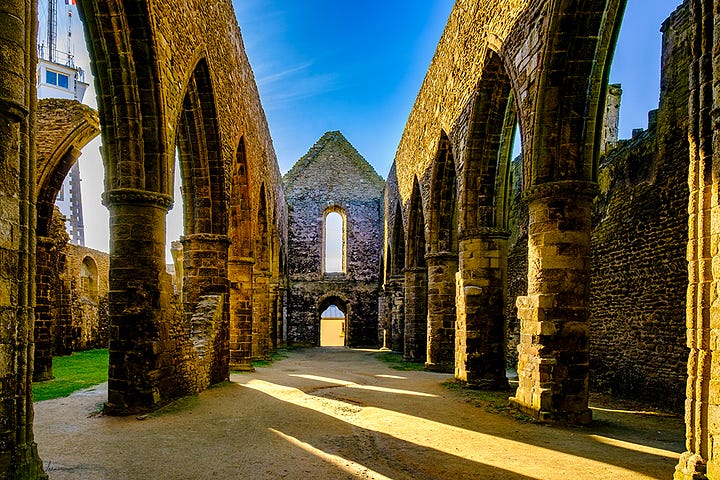
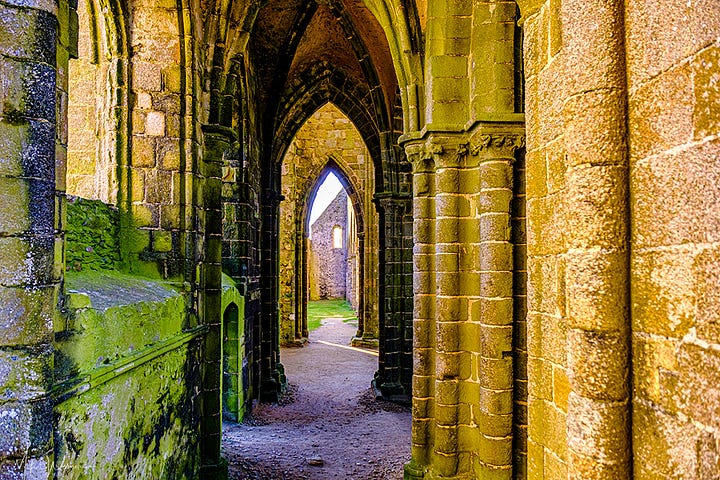
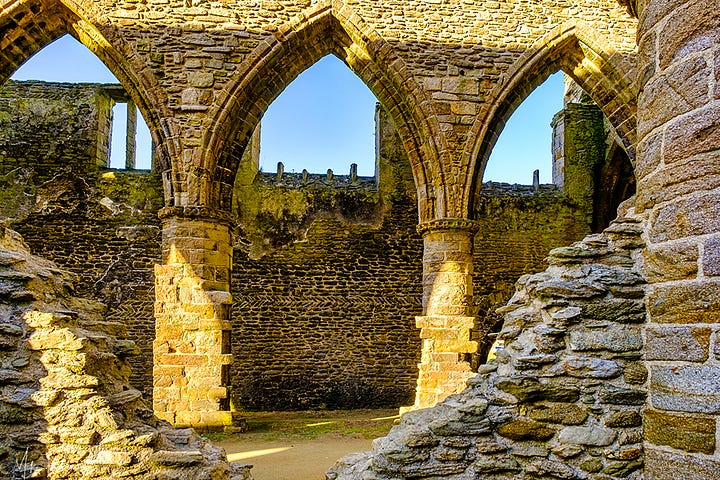
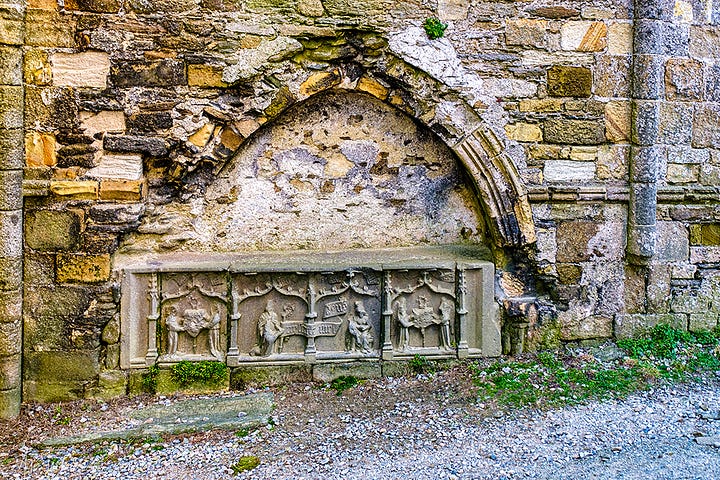
The commune is situated on the Pointe Saint-Mathieu, which is a notable point of interest. This headland is famous for its dramatic cliffside views and the ancient Saint-Mathieu Abbey ruins; the Saint Maur Monastery.
The Saint Maur Monastery is a site steeped in history and spiritual significance. Founded in the early 6th century, it is dedicated to Saint Maurus, a disciple of Saint Benedict, known for promoting the Benedictine rule and monastic life throughout France. This ancient monastery is part of the larger complex around the Pointe Saint-Mathieu, which includes the famous lighthouse and the ruins of Saint-Mathieu Abbey.
Over the centuries, the monastery has witnessed numerous historical events and has undergone various phases of construction and destruction. It served as a spiritual center and a community hub, playing a crucial role in the religious and social life of the region. The monks living there were involved in the local community, providing education, preserving manuscripts, and engaging in agricultural activities.
Chapelle Notre-Dame des Grâce
The origins of the Chapelle Notre-Dame des Grâces date back to the 15th century, though the exact date of its foundation is not precisely documented. It was built to serve as a place of worship and pilgrimage, dedicated to the Virgin Mary, who is venerated here as "Our Lady of Grace." Over the centuries, the chapel has been a focal point for local faith and devotion, with many visiting to seek blessings and to pray for mercy and protection.
Architecturally, the chapel showcases the typical elements of Breton religious architecture from the medieval period, featuring intricate stone work, traditional statuary, and stained glass windows that illustrate biblical scenes and the lives of saints. The interior is modest yet adorned with various artifacts and votive offerings, reflecting the deep spiritual connections and the rich history of maritime life in the region.
Phare de Saint-Mathieu
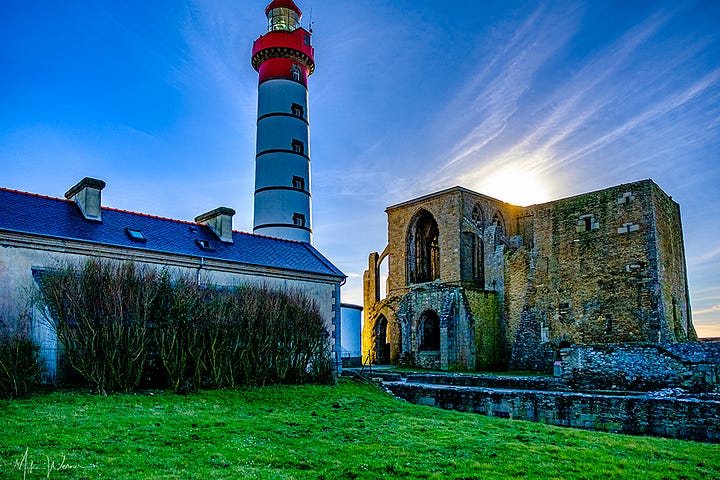
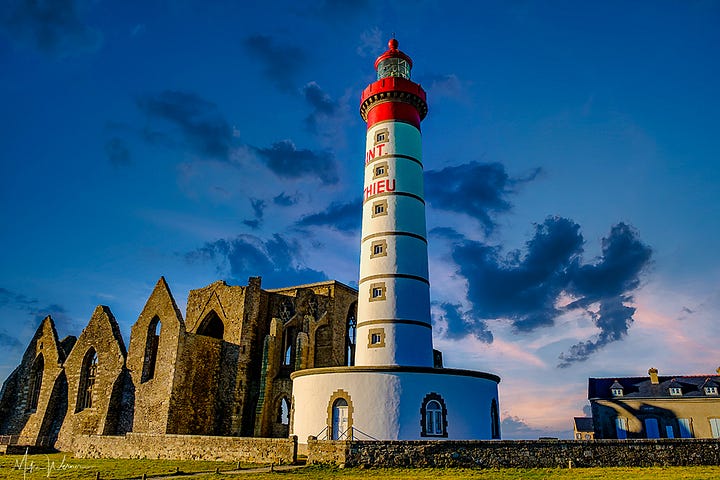
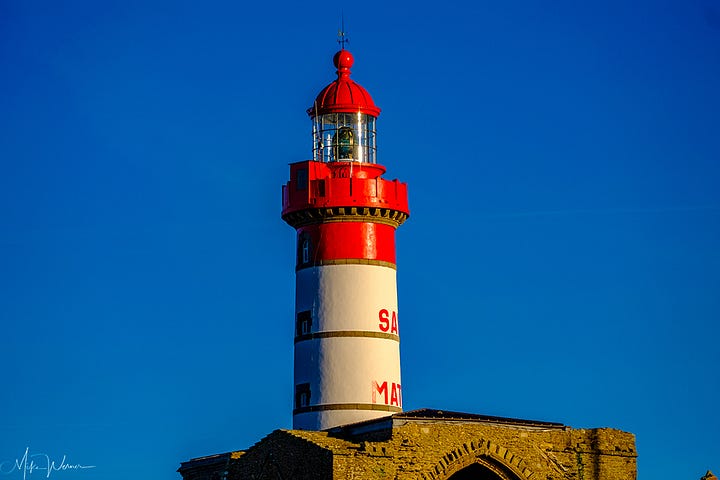

The Phare de Saint-Mathieu (Saint-Mathieu Lighthouse) is a historic beacon located on the scenic and rugged Pointe Saint-Mathieu. Established in 1835, the lighthouse stands amidst the remnants of an ancient abbey, a medieval monastery and the nearby semaphore station, built in 1806, contributing to the area's profound historical and cultural significance.
This lighthouse was built to ensure the safety of ships navigating the perilous waters off the coast of Brittany, known for their rocky outcrops and treacherous currents. Standing at about 37 meters tall, the lighthouse is constructed from local granite, giving it a robust and enduring presence that has withstood the harsh maritime conditions for nearly two centuries.
The lighthouse's light, which flashes white every 15 seconds, can be seen for up to 29 nautical miles. Its strategic location has made it a vital navigation aid in one of the busiest shipping lanes in the world, contributing significantly to maritime safety in the region.
Visitors to the Phare de Saint-Mathieu can climb to the top of the lighthouse for a panoramic view of the surrounding sea and landscape.
Cénotaphe aux Marins morts pour la France
The Cénotaphe aux Marins morts pour la France (Cenotaph for Sailors Who Died for France) is a solemn and poignant memorial located near the Phare de Saint-Mathieu. This memorial is dedicated to the memory of French sailors who lost their lives during maritime conflicts, particularly those whose bodies were never recovered from the sea.
Click here to read more about this memorial. You can subscribe to our free newsletter and receive updates directly in your inbox.
Musée Mémoires 39-45
The Musée Mémoires 39-45, is a significant historical site that delves into the events of the Second World War, particularly focusing on the role of the Finistère region and its strategic importance during the conflict. Housed in a former German bunker, the museum offers a unique and immersive experience, providing a vivid glimpse into the past with its extensive collection of artifacts, documents, and personal stories.
Click here to read more about this museum. You can subscribe to our free newsletter and receive updates directly in your inbox.

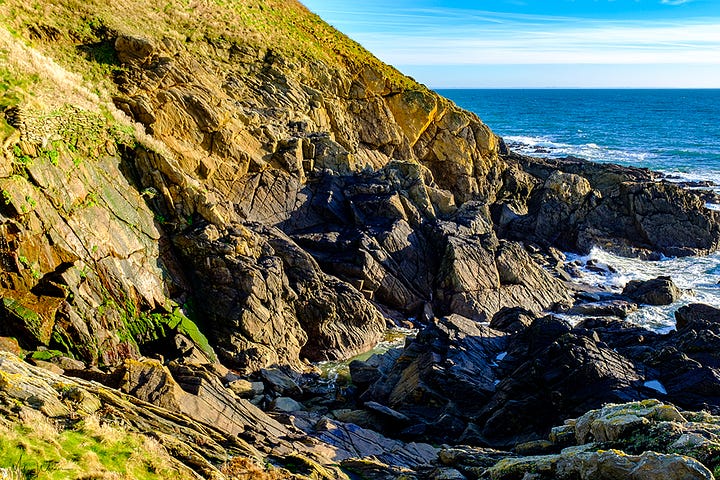

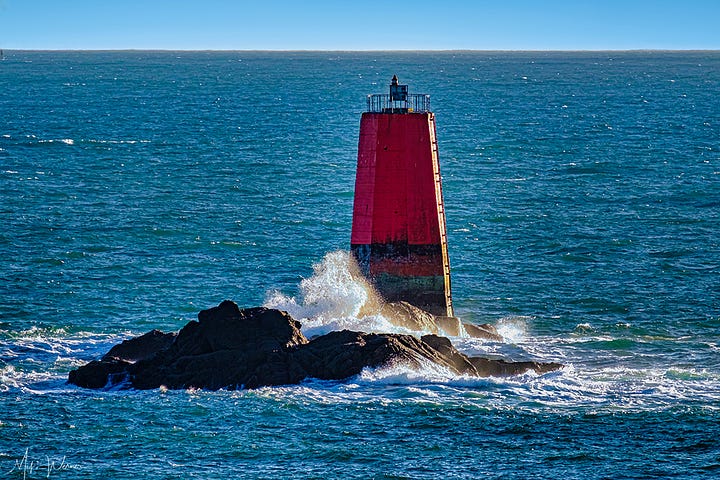
Plougonvelin is not just about its scenic beauty and historical sites; it also serves as a gateway to the Iroise Marine Natural Park, France’s first marine park, which is a haven for diverse marine life and a popular spot for diving and marine research. The park is dedicated to the conservation of marine ecosystems and offers a unique opportunity for visitors to engage with marine biodiversity.




